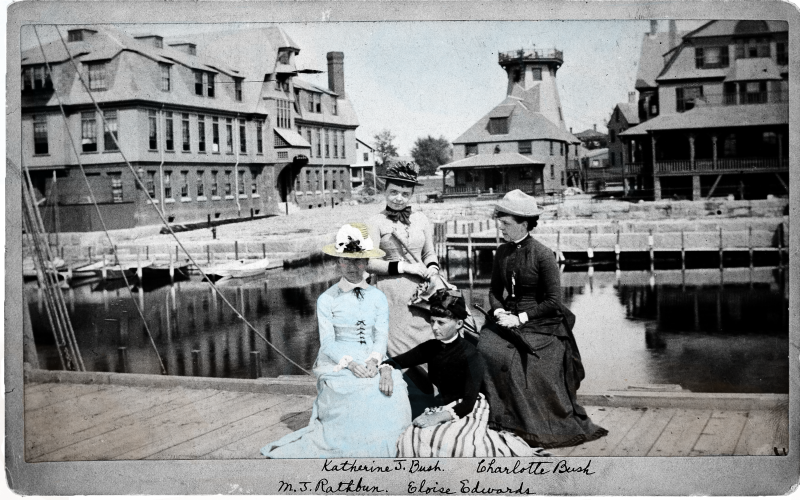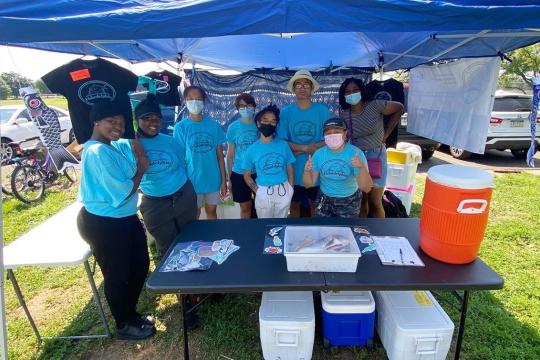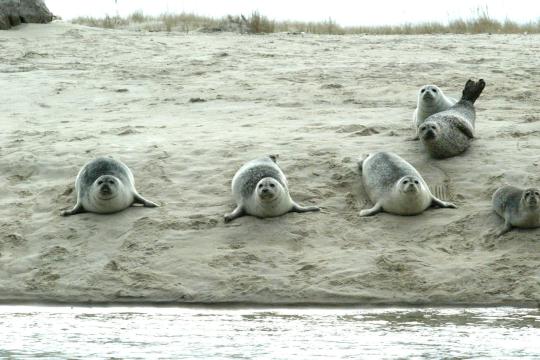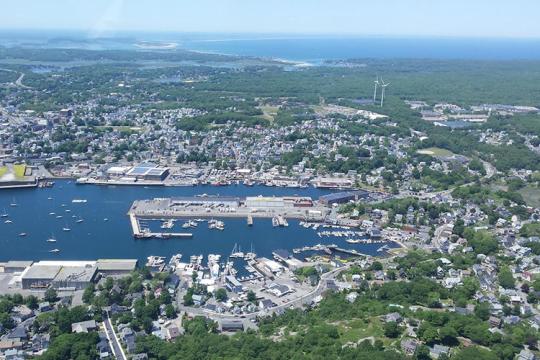One visit to Woods Hole, Massachusetts, in the summer of 1881 and Mary Jane Rathbun was hooked. It was the first time she had ever seen the sea. In that moment, the winds changed and set her on a scientific course—a life-long journey studying crustaceans.
This year marks NOAA Fisheries’ 150th anniversary. We’re taking a look back at some of the notable women scientists who made amazing contributions to the Northeast Fisheries Science Center and its research.
Mary Jane Rathbun was born on June 11, 1860 in Buffalo, New York. She attended Buffalo public schools and graduated from Central School in 1878. Three years later in 1881, she accompanied her brother, Richard, to Woods Hole, Massachusetts. He began working as a scientific assistant for the U.S. Fish and Fisheries Commission, which would later become NOAA Fisheries.
That same year she took a volunteer position assisting Spencer Baird, U.S. Fish Commissioner and secretary of the Smithsonian Institution. In 1884, she accepted a modestly paid position as clerk for the Fish Commission. While at the Fish Commission, she spent her time sorting, labeling, and recording crustacean specimens collected by Commission vessels. This work inspired her life-long study of crustaceans around the world.
In 1886, she transferred to the U.S. National Museum, now known as the Smithsonian’s Arts and Industries Building to work in the Museum’s Department of Marine Invertebrates. While her brother was the curator of the collection, she took over the general supervision and care. This included keeping records, cataloging specimen samples, and coordinating the flood of samples coming in from the Fish Commission’s expanding investigations of U.S. fishery resources. The vast knowledge and skills she gathered while working at the Fish Commission helped her sort and organize the museum’s specimens so others could reference and study them easily.
Over the years, Mary Jane Rathbun became one of the world’s leading experts on crab taxonomy. By the end of her career she had described 1147 species, 63 genera, and 5 higher categories of crustaceans. She also authored more than 150 publications. Her two most notable monographs are The Grapsoid Crabs of America, U.S. National Museum Bulletin 97 and The Cancroid Crabs of America, U.S. National Museum Bulletin 152.
She focused a lot of her attention on sorting out crustacean nomenclature—the system scientists use to name species. She rigorously used the International Rules of Zoological Nomenclature in her identifications and classifications. Her work and devotion made her one of the world’s leading authorities on crab taxonomy. It also led to an honorary master’s degree in 1916 and doctoral degree in 1917. That was something she probably didn’t imagine possible back in 1881 when her scientific journey began.
Credits and Acknowledgements
We thank the following for contributing information, images, and other digital media for this web feature:
- Smithsonian Institution Archives for images of Mary Jane Rathbun and page describing Mary Jane Rathbun’s time in Woods Hole, Massachusetts (Collection: RU 7256, Box 7, Folder: Memoir). Read their web feature on Mary Jane Rathbun.
- Department of Invertebrate Zoology, National Museum of Natural History, Smithsonian Institution for images of the specimen identification catalogue cards. Read their blog on Mary Jane Rathbun.
- Biodiversity Heritage Library for digital images of scientific publications and illustrations in the public domain.
- Cynthia Chris, Chair/Professor at the Department of Media Culture of the College of Staten Island/CUNY and Affiliated Faculty, Women's and Gender Studies’ Film Studies Certificate Program at the Graduate Center, City University of New York, for the digital image of a page in Mary Jane Rathbun’s unpublished memoir at the Smithsonian Institution Archives. Her recently published book “Crab” contains a chapter about Mary Jane Rathbun.
For more information, please contact Heather Soulen.










